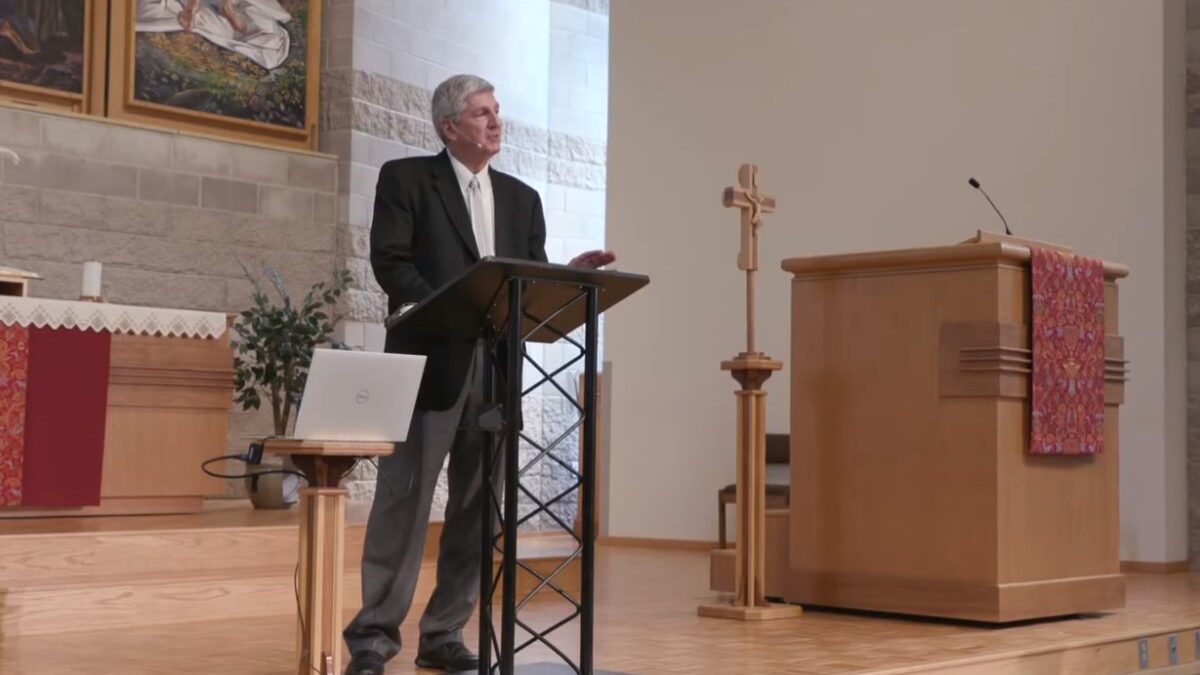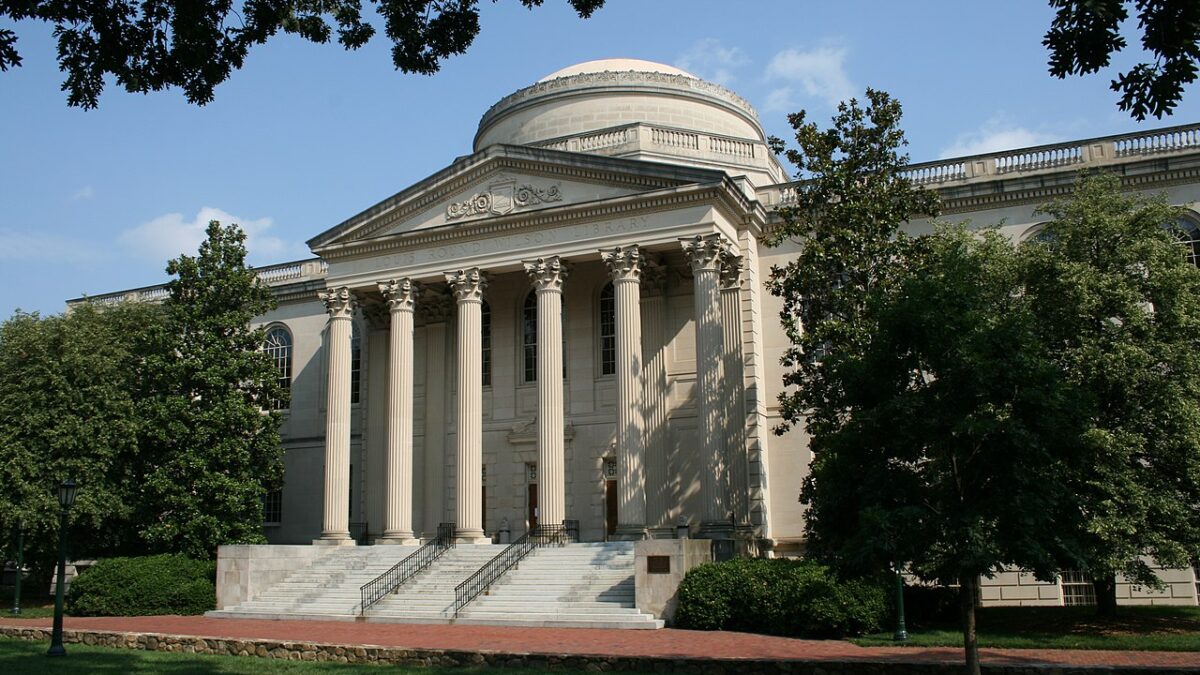
“The next president can make college more affordable by letting the federal government grant degrees instead of just financing them.” That is the title of Carlo Salerno’s recent Huffington Post article.
Salerno admits that the idea may seem “crazy” (even to Huffington Post readers). But we should not dismiss it as a left-wing fantasy, considering how the U.S. Department of Education has already taken over higher education with the help of the well-connected—like Salerno, an “education economist.” Salerno recently joined Vital Research—a company supported by school districts, higher education institutions, and liberal foundations—after working 15 years “for the federal government and national advocacy organizations doing legislative and regulatory analysis of higher education economics issues…”
Salerno deceptively begins his article with a problem that attracts the attention of fiscal conservatives: the cost of nontransferable credit hours. Four out of five students who plan to transfer, usually from low-cost community colleges to four-year schools, fail to earn degrees. Salerno believes this is unfair. College courses are all the same; the difference in tuition arises mainly from on-campus amenities, brand name, and networking opportunities.
Salerno sees an opportunity for U.S. DOE to exercise its “unique ability to leap the quality hurdle and create a reputable credential.” Government officials already determine student aid eligibility (with “quality metrics”) and “officially recognize the accreditors that set the standards for college quality,” he reasons. They could also establish requirements for a certificate, associate, or bachelor’s degree. They could create “a registry of eligible courses existing institutions (or third-party providers) already offer.” He suggests that the opportunity to “flex some muscle” and establish a dual system of “government degrees” and traditional “institutional degrees” would come from a “fresh president” elected this November.
For professors who still think of themselves as setting the standards, the idea of government degrees may come across as ludicrous and frightening.
How Common Core Got Us Into This Mess
But Salerno is not concerned with what professors think—just as the federally directed developers of the Common Core State Standards (CCSS) did not concern themselves what professors thought of their K-12 “college- and career-ready” English and math standards (as Sandra Stotsky and James Milgram, dissenting members of the validation committees, found out).
Nor did the feds ask the opinion of college instructors who found themselves taking workshops in the summer of 2014 on how to teach students educated under Common Core. They were unaware that the 2012 “agreements of collaboration” with the two Common Core testing consortia—Partnership for Assessment Readiness for College and Careers and Smarter Balanced Assessment Consortium—guaranteed placement in credit-bearing courses for students who had passed the PARCC or SBAC tests. The rationale was to alleviate high rates of remediation: 68 percent at community colleges and 40 percent at four-year colleges.
I and most of my colleagues at the community college where I once taught were all-too familiar with the inadequacy of K-12 education and the real need for remediation. We groused about having to slot in sixth-grade grammar reviews when we were supposed to teach students how to write college-level papers. Most would also agree that the freshmen I taught at Emory University should not have the same syllabus as my community college students.
We Need Reform—Just Not the Kind Bureaucrats Give Us
But the educrats worked behind the scenes, putting out the 2013 National Center for Postsecondary Research working paper “The Common Core State Standards: Implications for Community Colleges and Student Preparedness for College.” It reported that over 900 institutions had taken up the recommendation to “align developmental education and introductory college-level courses in math and English composition to the CCSS,” for “a smoother transition for students” and ease of transfer among colleges. The “Core to College” program in 10 states was described in the 2013 DOE working paper, “The Common Core State Standards: Implications for Community Colleges and Student Preparedness for College.”
“Making Good on the College-Ready Promise and Higher Education Engagement Core to College Alignment Director Convening, August 1-2, 2012” reported that “alignment directors” saw the 10 states as “bellwethers and models for the rest of the country.” It suggested outreach to other “stakeholders” and private colleges, “engaging faculty” in disciplines beyond English and Math, and teaching instructors how to teach “a new type of student, more prepared for college-level, discipline-specific work [emphasis added].”
In June 10, 2014, Chronicle of Higher Education published an essay by chancellors of three of our largest state university systems—California, New York, and Maryland—headlined “Use the Common Core. Use It Widely. Use It Well.” They announced the formation of Higher Ed for Higher Standards with 200 other postsecondary “education leaders.” It has since expanded to more than 400.
‘College-Ready’ Doesn’t Mean What You Think It Means
While Common Core boosters maintained that their graduates were “more prepared,” the ACT national profile report showed a decline in college readiness in English, Math, and Reading between 2012 and 2016. ACT also showed that Common Core “source-based writing” did not prepare students for the “ability to generate sound ideas” sought by professors; it confirmed ACT’s 2006 report showing the inferiority of Common Core-promoted “informational texts.”
But how much longer will professors be setting benchmarks? How many more will spend summers in workshops on teaching Common Core-US DOE-certified students? Will they be appalled, as I was in 2014, when I learned about this blow to professional esteem? Even as a lowly part-time instructor, I enjoyed the authority to grade students.
The American Association of University Professors, while defending the “academic freedom” and due process of Melissa Click (fired for using force to interfere with students’ rights), has been silent on this attack on academic freedom and professional autonomy.
The Future of Education Liberty Is in Peril
What will come next? Will the Department of Education review syllabi and exams? Will they determine that eco-criticism is a suitable topic of study, while the Enlightenment is not?
The camel has its nose under the tent. Consider:
- DOE has positioned itself as the authoritative source at the “College Affordability and Transparency Center,” offering a “scorecard” and sending out such missives as “26 Four-year Public Colleges with Low Costs and High Salaries.”
- The College Board, which produces the SAT (Scholastic Aptitude Test) college entrance exam, and the AP (Advanced Placement) exams, under the direction of president David Coleman, the “architect” of Common Core, has politicized AP American history, and now European, to the dismay of historians.
- The Department of Education promotes “free community college” that brings increased federal control and an expanding domain of influence, as the use of such terms as “K-16” and “P-20” indicates.
- The Every Student Succeeds Act (ESSA) increases DOE’s power over the states in test development and vastly expands federally controlled preschool.
- The federal government, since taking over student loans in Obama’s first term, has adjusted repayment to income and offered loan forgiveness to those working in “public service,” such as in public schools, Americorps, and nonprofits.
- For-profit schools, such as ITT, have been shut down with no due process.
- Colleges are following K-12 and adopting “competency-based education” standards (600 in 2015, up from the previous year’s 52). Professors are ignored.
What begins as a twinkle in the eye of an educrat often becomes policy. Has Salerno’s proposal been discussed in meetings we will learn about only later if Hillary Clinton is elected?
Consider what has come to pass since educrat Marc Tucker sent the new First Lady a letter in 1992 calling for the creation of a “national system of education,” “a seamless web of opportunities, to develop one’s skills that literally extends from cradle to grave and is the same system for everyone. . . .” Such education would begin “in the home with the very young and contin[ue] through school, post-secondary education and the workplace.”
Critics of Common Core warned early on that “college-ready” really meant community-college ready. It looks like they were being too generous.









